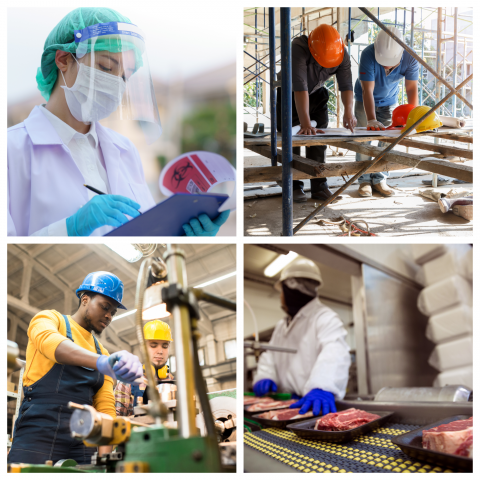New Article on "Work: A Social Determinant Worth Capturing"

In collaboration with the National Institute for Occupational Safety and Health (NIOSH) and the Council of State and Territorial Epidemiologists (CSTE), an online assessment was distributed among state occupational health contacts and epidemiologists in all 50 states to assess current practices in the collection of work and employment data on COVID-19 cases in state public health surveillance systems. We share the results and recommendations in the article "Work: A Social Determinant Worth Capturing," recently published in the special issue "COVID-19 in the Workplace: Observations, Research, and Lessons Learned" in the International Journal of Environmental Research and Public Health.
Of note was the recognition that barriers to collecting industry and occupation data included lack of staff, technology issues, and funding.
Work is a recognized social determinant of health. This became most apparent during the COVID-19 pandemic. Workers, especially those in certain industries and occupations, were at risk due to interaction with the public and close proximity to co-workers. However, there is a gap in the understanding of the risk of occupational exposure to COVID-19 and its impact on the full spectrum of worker groups or the magnitude of that risk.
Awareness of the prevalence of disease outcomes according to industry and occupation can assist states in identifying disease clusters or outbreaks, determining the magnitude of a problem within worker groups, and prioritizing industries and occupations for the development of prevention measures. Consistent collection of work and employment data, including industry and occupation as standard demographic data elements, would give jurisdictions the ability to provide more comprehensive and representative data on the distribution of injury and all illnesses across worker groups. Inclusion of industry and occupation data helps identify essential industries and occupations most impacted by a widespread infection and substantial health inequities.